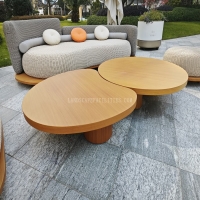Welcome to the website for landscape facilities products and knowledge.
How do landscape tables in smart cities incorporate IoT features for enhanced usability?
In the era of smart cities, landscape tables are no longer just functional urban furniture—they are evolving into intelligent hubs equipped with IoT (Internet of Things) features. These innovative designs enhance usability by integrating sensors, connectivity, and data-driven functionalities.
One key IoT feature is environmental monitoring. Smart tables can measure air quality, temperature, and humidity, providing real-time data to city planners and residents. Some even adjust their surfaces to optimize comfort based on weather conditions.
Connectivity is another major advantage. Many IoT-enabled landscape tables include USB charging ports, Wi-Fi hotspots, and even wireless charging pads, transforming public spaces into digital hubs. This encourages longer stays and fosters community engagement.
Energy efficiency is built into the design. Solar panels often power these tables, making them sustainable additions to urban landscapes. Some models even store excess energy for nighttime lighting or emergency use.
Interactive features like touchscreens or QR code access points provide wayfinding, local information, or event schedules, creating a seamless interface between citizens and their environment.
Maintenance becomes smarter too. Embedded sensors can detect when repairs are needed or when waste bins are full, allowing for proactive city management.
As urban areas continue to grow, these IoT-enhanced landscape tables represent a thoughtful convergence of design, technology, and sustainability—creating public spaces that are not just functional, but truly responsive to urban needs.
Related search:

Recommendation
Elliptical metal outdoor table with nested design, resembling wood grain, round table